patterns >  Biscotte Yarns and 1 more...
Biscotte Yarns and 1 more...
> Tithonia

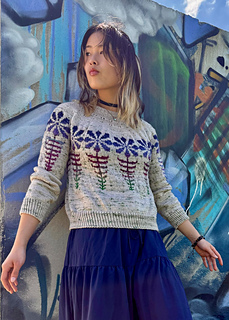
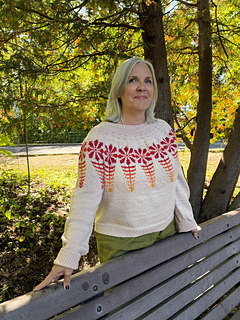
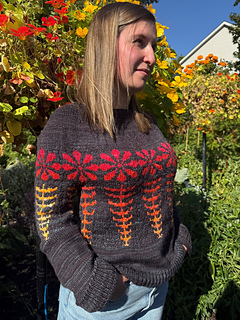


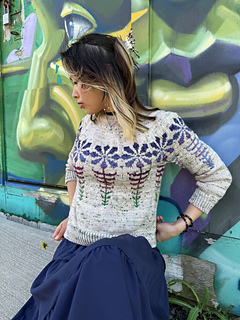
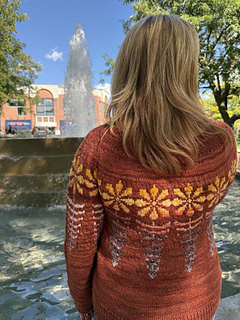

Tithonia
This sweater is made using Biscotte Yarns DK pure in solid (or speckled) as the main color, and the colorwork is achieved with the Metamorph colourway. The pattern includes instructions and a video tutorial to knit the colorwork using the Ladder back Jacquard!
JOIN OUR KNIT ALONG - STARTING ON OCTOBER 17th - Find all the details on Biscotte.org/Tithonia
…
Tithonia rotundifolia, commonly called Mexican sunflower, is native to Mexico and Central America.
MATERIAL NEEDED
BISCOTTE YARNS, LOUISE ROBERT COLLECTION OR PATRICKNITS SIGANTURE - DK PURE 90% anti-felting merino wool, 10% silk; 260 m for 115 g - shown in
* CP | 3 (4, 4, 5, 5, 6, 7) SKEINS -
Agathe Moss for the version 1 (grey),
Blueberry field for the version 2
(black), Dream baby for the version 3
(pink), and Chili pepper for the
version 4 (red).
* CC | 1 (1, 1, 1, 1, 2, 2) SKEIN(S) -
Berry Patch for the version 1 and
Sunset for both the version 2 & 3, and
Dayflower for the version 4.
Circular needles and DPN’S of 4 mm (US 6) - cable length of 80 cm (32’’) - or size required to obtain the gauge.
Circular needles and DPN’S of 3.5 mm (US 4) - cable length of 80 cm (32’’) - or size required to obtain the gauge.
Stitch markers 4 (including one unique marker that is different from the others)
Tapestry needle
Stitch holder or scrap yarn
SIZES - A (B, C, D, E, F, G)
Burst finished circumference: 84.5 (91.5, 98.5, 101.5, 112, 122, 132) cm; 33¼ (36, 38¾, 40, 44, 48, 52)“.
A schematic is available at the end of the pattern with more details.
GAUGE
24 sts and 30 rows = 10 cm (4”) .
NOTES
DESIGNER’S NOTES - This yoke is worked from the top down with a recommended ease of approximately 5 to 10 cm (2 to 4 in.). You can adjust the length of the body and sleeves as needed, keeping in mind to also adjust the amount of yarn required to complete the sweater. To complement this pattern, I invite you to visit the Knitting-101 blog on BiscotteYarns.com for tutorials on stranded colorwork, yoke increases (M1), and short-row wrap-and-turn techniques.
EDITOR’S NOTES - Since the pattern involves several consecutive stitches of the same color and requires carrying the contrasting yarn over a long distance behind the work, I suggest using the Ladderback Jacquard technique. With this method, instead of crossing the unused yarn behind the live stitches, you increase a temporary “ladder stitch” on the wrong side of the work and purl it as you go. To make your work easier, I’ve modified the charts by adding lines indicating where to create your “ladder stitches”. You will find the tutorial “Ladderback Jacquard in three steps” at the end of this pattern, and I have also prepared a video tutorial to help you understand this fabulous technique.
La version française de ce patron se trouve sur LesLainesBiscotte.com
1067 projects
stashed
905 times
- First published: October 2025
- Page created: October 4, 2025
- Last updated: October 4, 2025 …
- visits in the last 24 hours
- visitors right now




